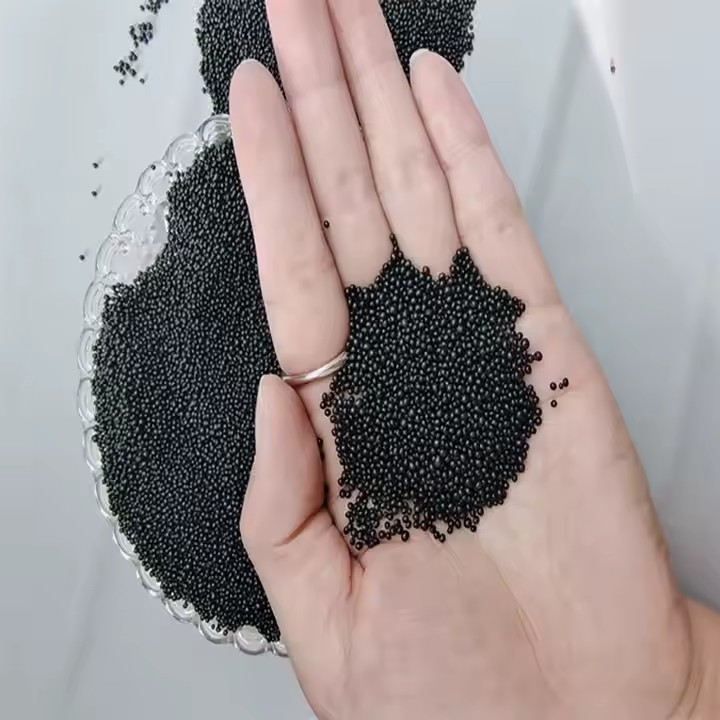La mousse de polystyrène expansé (EPS) est un matériau plastique léger et adaptable qui trouve sa place dans de nombreux domaines tels que l'isolation, l'emballage et la construction. Cependant, à mesure que son utilisation croît, les inquiétudes concernant son effet sur la planète et la façon dont elle se décompose au fil du temps. Cette pièce examine comment la mousse EPS s’usure, comment elle résiste aux forces de la nature et les nouvelles idées en cours de développement pour réduire ses dommages à l’environnement.

Qu'est-ce que la mousse de polystyrène expansé (EPS)
La mousse EPS est souvent considérée comme la matière blanche utilisée dans l'emballage ou comme des panneaux pour garder les bâtiments au chaud. Les gens l'aiment parce qu'il n'est pas lourd, peut absorber les bosses et maintient bien la chaleur.

Composition et processus de fabrication de l'EPS
L'EPS provient de minuscules perles de polystyrène qui contiennent un gaz spécial, généralement le pentane. Ces perles se gonflent avec de la vapeur. Ensuite, ils sont formés en formes en utilisant la chaleur et la pression. Ce que vous obtenez est une mousse dure qui est principalement de l'air - environ 98% - et juste un minuscule morceau de polystyrène, environ 2%.
Lanzhou HUASHENG New Materials Co., Ltd. est une société de pointe axée sur la création, la fabrication et la vente de mousse de polystyrène expansible (EPS).
Applications courantes de l'EPS dans la vie quotidienne
Vous pouvez repérer les produits EPS partout dans la vie quotidienne. Ils sont utilisés pour emballer des gadgets en toute sécurité, isoler des maisons et même dans des projets amusants comme des expositions d’art. L’EPS est très important à bien des égards.
Ces objets font un excellent travail pour protéger les choses pendant qu'elles sont déplacées. Ils protègent les choses contre les frappements, les secoussements et les chocs qui pourraient leur faire du mal.
Propriétés physiques et chimiques de la mousse EPS
Savoir de quoi l’EPS est fait nous aide à comprendre pourquoi il reste si longtemps dans la nature.
Résistance à l'humidité, à la chaleur et aux produits chimiques
La mousse EPS n’absorbe pas facilement l’eau puisqu’elle la repousse et résiste bien à la plupart des produits chimiques. Il peut supporter une bonne quantité de chaleur, mais commence à se plier quand il devient plus chaud que 100 ° C. Ces traits le rendent difficile, mais ils signifient également qu'il persiste dans la nature pendant des siècles.
Intégrité structurelle au fil du temps
Grâce à son design de bulle scellée et à son maquillage stable, l'EPS conserve sa forme et sa résistance pendant longtemps. Autrement dit, à moins qu'il ne soit physiquement cassé ou confronté à des conditions météorologiques difficiles.
L'exposition à l'environnement et ses effets sur la dégradation de l'EPS
Même si l'EPS dure bien sous des réglages réguliers, certains facteurs naturels peuvent changer la façon dont il s'usure.
Impact de la lumière solaire et des rayonnements UV
Les rayons UV du soleil peuvent décomposer la mousse EPS au fil du temps. Cela provoque la fissure de la surface et devient jaune à mesure que ses liens intérieurs s'affaiblissent. Cependant, cela se produit lentement à moins que la lumière UV ne soit très forte.
Rôle des fluctuations de température et des intempéries
Passer par des gels froids et des dégels chauds à maintes reprises peut stresser l'EPS et le rendre plus faible. Mais cela n’est pas dû à un changement chimique. Il s’agit plus de l’usure physique. Néanmoins, ces effets sont faibles par rapport à des choses comme le bois ou le papier.
Interaction avec les environnements de l'eau et du sol
Lorsque l’EPS est assis dans l’eau ou la saleté, il change à peine parce qu’il est si stable. Il ne fondt pas ou ne libère pas de mauvaises choses dans des conditions normales. Cependant, il peut se briser en petits morceaux au fil du temps à cause de frottements ou de poussées.
Potentiel de décomposition biologique de la mousse EPS
Bien que la nature ne casse pas beaucoup l’EPS, certains processus de vie montrent un peu d’espoir sous les bonnes configurations.
Activité microbienne et biodégradabilité
La plupart des petites insectes ne peuvent pas manger du polystyrène car il est fabriqué par l’homme. Mais certains types spéciaux de bactéries ont été trouvés qui peuvent grignoter sur EPS très lentement dans les tests de laboratoire.
Recherche sur la décomposition enzymatique des matériaux EPS
De nouvelles études examinent les enzymes qui pourraient couper le polystyrène en morceaux plus petits et plus simples. Cette idée semble bien sur papier. Cependant, il faut beaucoup plus de travail avant qu'il puisse être largement utilisé.
Interventions humaines pour la rupture de l'EPS
Puisque la nature lutte pour décomposer l’EPS, les idées intelligentes des gens sont essentielles pour gérer les déchets d’EPS de manière efficace.
Méthodes de recyclage mécanique
Une façon de réutiliser l'EPS est de le broyer en petits morceaux. Ces morceaux peuvent ensuite être transformés en nouvelles choses comme des cadres photo ou des panneaux pour l'isolation.
Les machines de haute technologie peuvent réduire l’EPS à une taille minuscule, réduisant considérablement les coûts de transport avant qu’il ne soit réutilisé. Certains systèmes peuvent réduire le volume de 50 à 1.
Techniques de recyclage chimique
Une autre méthode utilise des liquides comme le d-limonène pour faire fondre l'EPS. Cela nous permet de récupérer du polystyrène pur à utiliser à nouveau.
L'utilisation de solvants comme le d-limonène pour recycler l'EPS en matériau de haute qualité est une façon intelligente de continuer à le réutiliser sans perdre sa bonté.
Pyrolyse et processus de récupération d'énergie
La pyrolyse chauffe l'EPS sans air pour le transformer en pièces de base ou en carburant. Cette méthode peut rendre du polystyrène super pur, jusqu'à 99,7%, ce qui est l'un des meilleurs résultats pour la réutilisation des déchets plastiques.
Longévité des EPS dans les décharges et les environnements naturels
Même avec tous les efforts pour le recycler ou le décomposer, beaucoup de EPS finissent toujours dans les décharges ou dans la nature. Là, il reste entier pendant de nombreuses années, même des centaines.
Estimations sur les délais de décomposition
Certaines devinations disent que les produits en polystyrène expansé pourraient prendre des centaines, peut-être des milliers, d'années pour s'effondrer complètement dans une décharge typique. C'est parce qu'il n'y a pas de lumière, d'air ou d'insectes pour l'aider à la décomposer.
Comparaison avec d'autres matières plastiques
Lorsque vous regardez les plastiques qui pourrissent, comme le PLA ou le PHA, ils peuvent disparaître en quelques mois s’ils sont correctement compostés. Cependant, l’EPS traditionnel prend beaucoup plus de temps pour disparaître.
Préoccupations environnementales liées aux déchets EPS non dégradables
Le fait que l'EPS jeté dure si longtemps crée de grands problèmes pour l'environnement dans le monde entier.
Contribution à la pollution par les microplastiques
De gros morceaux d’EPS peuvent se rompre en minuscules microplastiques à cause du frottement ou de l’exposition au soleil au fil du temps. Ces morceaux se glissent dans le sol et l’eau, et ils sont presque impossibles à nettoyer complètement.
Impact sur les écosystèmes marins et terrestres
Les animaux pensent souvent que les morceaux de mousse flottants sont de la nourriture. Ils les mangent et se blessent ou meurent. De plus, de minuscules morceaux de plastique de mousse cassée s’accumulent dans la chaîne alimentaire. Cela peut même nuire aux gens au final.
HUASHENG: Un fournisseur de confiance de produits EPS de haute qualité
Même avec les questions difficiles de combien de temps prend l'EPS pour s'effondrer, des entreprises comme HUASHENG travaillent dur. Ils trouvent des moyens meilleurs et plus écologiques d’utiliser des produits en polystyrène expansé grâce à de nouvelles idées intelligentes.
Dans le but de « soulager la charge sur notre planète », HUASHENG déclenche un changement mondial dans les matériaux, en commençant par une seule petite perle de polystyrène.
Aperçu des catégories de produits de HUASHENG
HUASHENG a différents types d'EPS faits pour des emplois spécifiques:
Classe commune
Le type E-standard est un EPS régulier que beaucoup utilisent. Il fonctionne bien pour l'emballage de base comme les boîtes à poissons ou l'artisanat. Il se gonfle rapidement et tient sa forme bien.
Grade retardant la flamme
Ce type est souvent utilisé dans l'isolation des bâtiments où les règles d'incendie sont strictes. Par exemple, leurs bits retardants de flamme B1 ont été utilisés dans le projet GreenBuild Eco-city. Cela a augmenté les économies d’énergie de 14 % et atteint les niveaux de certification LEED Gold.

Graphite de qualité
EPS avec graphite ajouté permet un meilleur contrôle de la chaleur. Il est parfait pour les maisons qui économisent de l’énergie et restent fortes même lorsque le temps change beaucoup.
Protection de l'environnement
Ce type comprend des matériaux réutilisés mais fonctionne toujours bien. Il est idéal pour les entreprises qui se soucient de la planète et veulent atteindre des objectifs écologiques.
qualité noir carbone
EPS noir est choisi pour l'apparence et la ténacité. Il est souvent vu dans des œuvres d'art présentées lors de grands événements mondiaux.
Solutions REPS personnalisées
Les options sur commande comme l'emballage réutilisable EcoPack réduisent les problèmes des clients et réduisent les coûts d'emballage de 28 %.
Engagement envers la qualité, l’innovation et la durabilité
Le cœur du succès de HUASHENG est son accent fort sur les nouvelles idées et la meilleure technologie. Leur processus de fabrication à cercle complet réutilise plus de 95% des déchets d'usine. Ils répondent également à des règles mondiales rigoureuses telles que la certification GRS et les normes environnementales UL 2809.
Résumé des principales informations sur la dégradation de l'EPS
Alors que les produits en polystyrène expansé sont incroyablement utiles dans de nombreux domaines parce qu'ils durent si longtemps:
- Limitations naturelles de la décomposition du polystyrène expansé: Il lutte contre l'eau, les produits chimiques et les minuscules insectes. Cela signifie qu'il reste pour toujours à moins que nous ne le recyclons délibérément.
- Importance de l’utilisation, de l’élimination et du recyclage responsables : de nouvelles idées de leaders comme HUASHENG prouvent que le recyclage intelligent peut réduire considérablement les dommages à long terme à la nature.
Questions fréquentes :
Q1: Le polystyrène expansé est-il biodégradable dans des environnements naturels?
R: Non. Les produits en polystyrène expansé réguliers ne se décomposent pas dans la nature. La plupart des minuscules insectes ne peuvent pas manger des choses artificielles comme le polystyrène à moins qu’il ne soit dans une configuration spéciale.
Q2: Le polystyrène expansé peut-il être recyclé efficacement?
R : Oui. Avec les outils d’aujourd’hui comme les systèmes à base de liquides ou les machines qui le réduisent de 50 à 1, et les processus qui le rendent sûr pour l’utilisation alimentaire en vertu des règles de la FDA, le recyclage fonctionne bien si les bons systèmes sont en place.
Q3: Combien de temps faut-il pour que la mousse EPS se décompose?
R: Dans les décharges ou l’océan où il n’y a pas de soleil ou d’insectes pour aider à la décomposer, l’EPS peut durer des centaines ou même des milliers d’années. Tout dépend de combien il est exposé à la nature.






